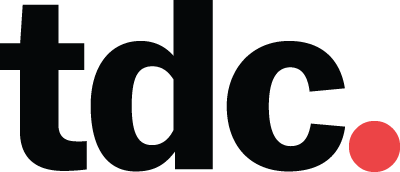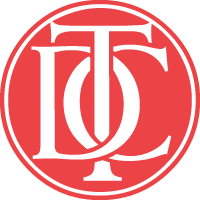Member of the Month: Fernando Díaz
Fernando Díaz, a graphic designer born in Montevideo, Uruguay, has been winning awards for his type designs for nearly a decade, which happens to be about as many years as he’s designed type. For August’s Member of the Month feature, Elizabeth Carey Smith interviews Fernando about how he began and co-founded Uruguay’s first digital type foundry, TipoType; his encounter with a type hero on his first trip to New York; how knowledge about type is spreading in Uruguay; and why joining Type Directors Club has been a good thing.
You’re in NYC this summer for the Type@Cooper condensed program. After having made type for many years already in Uruguay, what prompted you to take the program?
The other day I was digging through my old digital files and found the first letters I ever made. They dated back from 2007! So, I realized that I’ve been doing type design for ten years now.
Back then, I was getting my BA in Graphic Design and had this amazing typography teacher, Vicente Lamónaca. He encouraged me to keep developing my project and gave me feedback, even after school hours. While working on my first typeface, I realized that I wanted to keep doing that for the rest of my life, but I didn’t know that it was possible as a career. I saw it as a hobby and was glad to do it in my spare time. Fast forward to now: it’s my full-time job, and Vicente is one of my partners at TipoType, the first digital type foundry in Uruguay.
But since I began, I’ve been largely self-taught. My first typeface was the third ever to be conceived in my country—so I had no formal training. My country doesn’t have the typographic tradition of either Europe or the United States, so everything I’ve learned has been from my own research in old books, forums, videos, podcasts, events, and email exchanges. Thinking about it, I guess that it’s just part of who I am — I love to learn and believe that no matter how long you are in a business, there is always something new to explore, new points of view to consider, or room to improve.
One of my dreams has always been to do a more in-depth study about typography abroad. Fortunately, this dream came true, and it was awesome!
Was this your first time in New York?
Yes! I love to travel and have traveled throughout most of Latin America, but this is my first time visiting the United States, or for that matter, being in a city this big. It’s definitely been humbling to see and experience the architecture, the history of the city, the art, and the way of life. I come from a small country. We are only 3 million people and actually have more cattle than people — yes, really, 14 million cows! — so you can imagine the contrast between Montevideo and New York City.
 Charrúa, 2017 — a work-in-progress begun during my five weeks in the Type@Cooper Condensed Program.
Charrúa, 2017 — a work-in-progress begun during my five weeks in the Type@Cooper Condensed Program.
I saw that you had a chance to meet Gerard Unger two weeks ago when he was awarded the TDC Medal. Has he been an influence on your work?
Yes, Gerard Unger’s work has always been an inspiration to me. One of the most well known newspapers from my country uses Swift, one of my favorite serif typefaces, which I took as inspiration while designing my first font. I’ve always liked newspaper type, especially if it’s robust, crisp, and has straight lines.
At the opening of the Type Directors Club TDC63 exhibition at Cooper Union, I was with some friends from Type@Cooper and we waited 20 minutes to go up and talk to him, because we didn’t want to be a bother. Eventually, we built up some courage and went over to congratulate him on winning the well-deserved TDC Medal. We shook his hand even though we were excited and nervous. He was very nice to us.
The funny thing is that the very next morning, while I was working at my desk in Cooper Union, Dr. Unger suddenly entered the room, walked in my direction, looked at the print-outs of my new typeface, and exclaimed, “Hello, hello! Oh, a squarish typeface! This is very interesting.” So, we started talking about type and he complemented my work! I spent all day with a smile on my face.
 Brother 1816, 2016 — (Typographica‘s Best Fonts of 2016, MyFonts Best Sellers 2016).
Brother 1816, 2016 — (Typographica‘s Best Fonts of 2016, MyFonts Best Sellers 2016).
Do people in Uruguay understand what you do for a living? No one here really gets it.
Most people don’t understand it… and when they finally do, they say something like. “And you can live from that?” I guess they assume that it’s free or something.
But fortunately, that’s starting to change. With TipoType, we offer special discounts just for Uruguayans so that they can buy software legally at a reasonable price. This offer eventually got people’s attention and began a dialogue about legal software and the work involved in creating typefaces.
Somehow we were able to get the media’s attention. When we sold fonts to Google, it was the first time a newspaper contacted us. They contacted us another time because Edward Johnston was born in Uruguay and Vicente did several exhibitions with material donated by his foundation. Another time they called because the fonts from Martín Sommaruga, our other partner, were used by our local airline and also for Uruguay’s national ID cards. So, we can say that all of our country will eventually have our fonts in their pocket.
For us change is very special. Ten years ago, it was unthinkable to have local designers buying and/or using national typefaces for their work.
 Trasandina, 2015 – (TiposLatinos Excelence 2016).
Trasandina, 2015 – (TiposLatinos Excelence 2016).
What do you do outside of work? Do you see any parallels, either in process or personality, with being a type designer?
There are two things that I can’t spend a lot of time without — my computer and my drum kit. I’ve been playing drums since I was 14 years old, and it’s my other passion besides type design. I have a band and we are recording our first album in October!
I think type and music have a lot of parallels — for example, type classification (Venetian, Garalde, Realists) and music styles (salsa, songo, Candombe), music volume might be related to visual impact, letters representing sounds, legal and marketing stuff, and so on. But the main characteristic that’s interesting is rhythm. When you are creating a new typeface, most of the times you probably don’t know what you are doing until you print a whole page of text in several sizes. That’s when you see the general texture, the mood, the rhythm and patterns. You feel the shapes, the strokes, notes, and the silences and how every tiny decision that you make will impact that final piece.
One of the things I love the most about being a type-designer is how I can distribute my time to work and still enjoy other aspects of life. Sometimes I spent whole weekends working, or entire weeks relaxing. It’s a healthy to be able to find that balance and flexibility to take advantage of hobbies, travel, and meeting friends and family.
The parallels you see with music are fascinating. In fact, there are a lot of designers I can think of who are also proficient musicians. Do you think there are similarities in the satisfaction you find when completing a song or a typeface? Or when you have discovered a melody and a system for type?
I’ve noticed that too, and it’s amazing! Finishing a typeface is like a having a new son or daughter that you are proud of and it’s also similar to how I feel after finishing an album. There is a shared sense of satisfaction in creating a melody or musical pattern and a type system that is different, original, and works.
To be a good musician, you need to have a good ear and a developed sense of harmony, and to study, practice and market yourself. It’s the same thing with type. One of the most important aspects that these two disciplines share is the degree of perfectionism — almost OCD. You need to fine-tune your senses to perceive the tiniest of variations — many of which are only a fraction of a millimeter or of a second — and to understand how that adjustment affects the whole. Some might say that there is a ton of math and science involved in both disciplines. Who knows? Maybe they even share some parts of the brain.
 Libertad, 2014 — (Platinum CLAP Award 2015, Tipos Latinos 2016).
Libertad, 2014 — (Platinum CLAP Award 2015, Tipos Latinos 2016).
You joined the Type Directors Club a couple of years ago. What drew you to join? For you, what is the value in belonging to this community?
The first time I heard about TDC was when Diego Vainesman, a former TDC President and one of my favorite people, was in my country giving a lecture about the community. I was instantly fascinated! He encouraged me to join, to participate in sending my work, and to come to Type@Cooper. So, if it weren’t for him and the TDC, I probably wouldn’t be here now.
After attending the exhibition opening, I can say that the people who make TDC are exceptional as professionals and as people. So it’s an honor to be part of this community and a great privilege to be one of the members of the month!
Links:
Website: http://www.ferfolio.com/
Twitter: @ferfolio
Instagram: @ferfolio
Behance: https://www.behance.net/ferfolio
Dribble: https://dribbble.com/ferfolio
Read past Member of the Month features here:
June 2017: Juan Villanueva
May 2017: Mark Simonson
April 2017: Mary Marnell
March 2017: David Adams
February 2017: John Clark
January 2017: Pamela Green
December 2016: Alexander Tochilovsky
November 2016: Jackson Alves
October 2016: Nina Stössinger
September 2016: Graham Weber
August 2016: Thomas Jockin
July 2016: Craig Ward
June 2016: Juan Carlos Pagan
May 2016: Wael Morcos
April 2016: Ilene Strizver
March 2016: Sascha Lobe
February 2016: Dawn Hancock
January 2016: Michael Bierut
December 2015: Yomar Augusto
November 2015: Debbie Millman
October 2015: Niral Parekh
September 2015: Marta Cerdà
August 2015: Kevin Cantrell
July 2015: Neil Patel
June 2015: Gail Anderson
May 2015: Ricardo Cordoba
April 2015: Cherise Conrick
March 2015: Paula Scher
February 2015: Ray Masaki
January 2015: Bruno Maag


